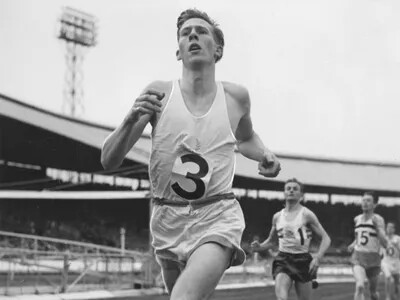Running News Daily
Running News Daily is edited by Bob Anderson. Send your news items to bob@mybestruns.com Advertising opportunities available. Train the Kenyan Way at KATA Kenya and Portugal owned and operated by Bob Anderson. Be sure to catch our movie A Long Run the movie KATA Running Camps and KATA Potato Farms - 31 now open in Kenya! https://kata.ke/
Index to Daily Posts · Sign Up For Updates · Run The World Feed
Sub-4-minute milers live longer, new research shows
Breaking the 4-minute mile barrier is a testament to natural speed and hard work, but could it also predict longevity? Researchers recently tracked the first 200 athletes to break the four-minute mile mark between 1954 and 1974, and discovered a striking trend in terms of the health and longevity of the athletes.
Elite athletes are known to have bigger hearts due to sustained aerobic output, and in the past, some research has indicated the belief that this could negatively impact their health and longevity. This study demonstrated the opposite. The study was released to mark the 70th anniversary of Sir Roger Bannister‘s sub-four-minute mile and revealed that the elite runners outlived the general population by an impressive margin.
On May 6, 1954, Bannister successfully broke the four-minute barrier at Oxford’s Iffley Road track, clocking 3:59.4. Until then, the four-minute mile was considered by many to be impossible. Some runners had come close, but the fastest among them could only muster 4:01. Bannister ushered in a new era of runners with his record-breaking time, and as of 2022, the four-minute barrier had been broken by more than 1,750 athletes.

A team led by scientists from Victor Chang Cardiac Research Institute in Australia who partnered with Canadian researchers gained access to the health records of the first 200 people on record who ran sub-four-minute miles. The list of speedsters included athletes from the U.K., Australia, France, New Zealand and the U.S. The runners (all male) were all born between 1928 and 1955, and most were still alive. These top-tier athletes outlived the general population by an impressive margin.
“Breaking the four-minute mile was an extraordinary achievement 70 years ago and revealed just what the human body can achieve,” said Professor Mark Haykowsky, Research Chair in Aging and Quality of Life in the University of Alberta’s faculty of nursing. “It set off a wave of runners following in Sir Roger’s mighty footsteps.

“Remarkably, we found that, like Sir Roger, who lived to the ripe old age of 88, most of the first runners also lived well into their 70s, 80s and a majority are alive and healthy today.”
On average, the runners enjoyed nearly five additional years of life over the general population. The researchers also found intriguing patterns across different decades. Athletes who achieved this milestone in the 1950s surpassed their peers by a staggering nine years, on average, while those from the 1970s still boasted an extra five and a half years of life.
With an average age of 77 among the surviving athletes, these findings challenge conventional notions of aging and highlight the remarkable impact rigorous physical training has on longevity.
by Keeley Milne
Login to leave a comment




